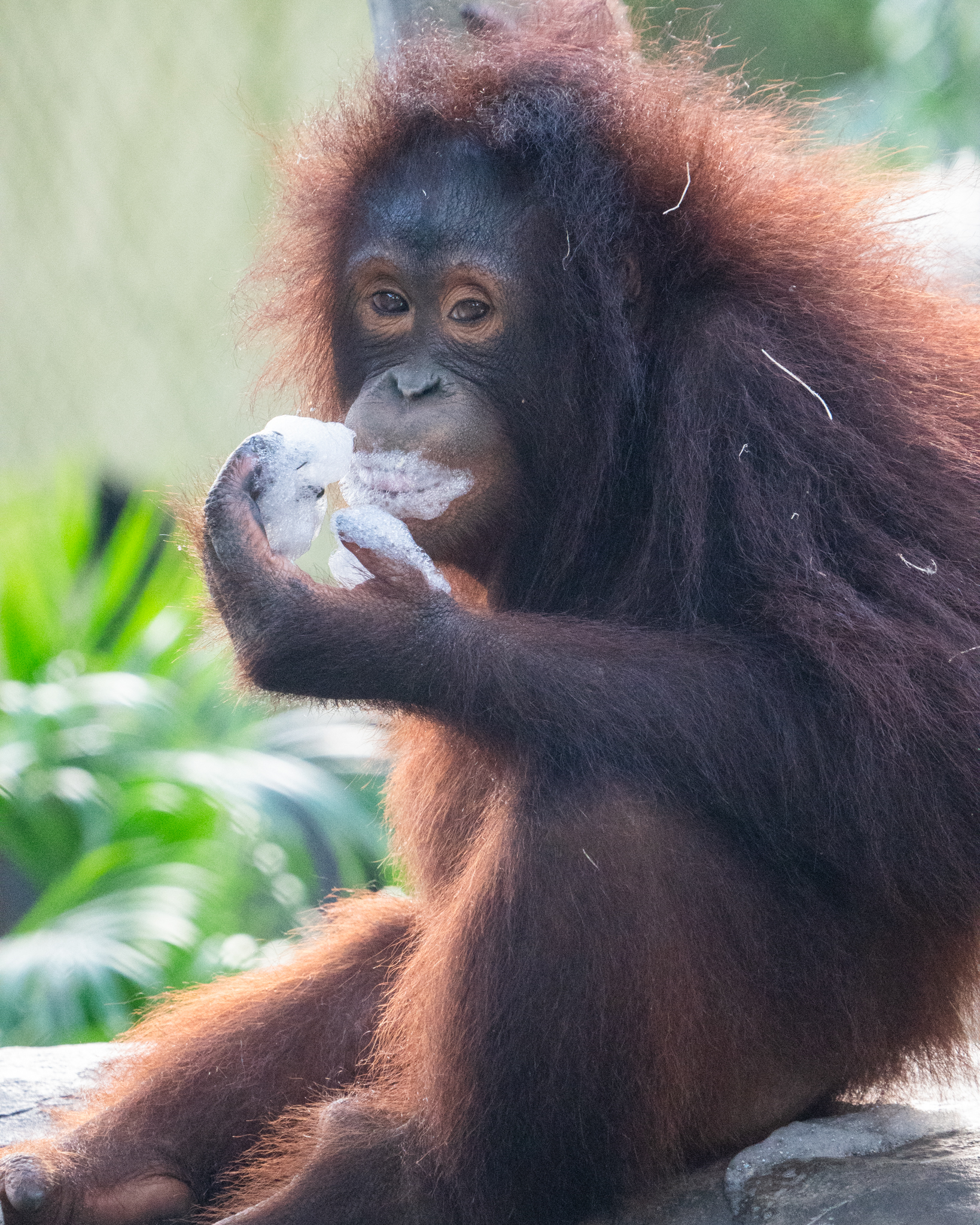- Enrichment in Zoos: Understanding its Importance and Impact on Animal Well-being
- The Fascination of Orangutans: Adaptations and Use of Enrichment Tools
- Strategies and Benefits of Using Bubbles as Enrichment in Captive Environments
- The Role of Zoo Management in Ensuring Effective Enrichment Programs
- Wildlife Conservation: Linking Zoo Practices with Broader Conservation Goals
Enrichment in Zoos: Understanding its Importance and Impact on Animal Well-being
Enrichment is a fundamental aspect of modern zoos, providing animals with mental and physical stimulation that mimics the challenges they would face in the wild. It is a vital component for the well-being of animals in captivity, helping to alleviate stress, boredom, and the potential negative effects of confinement. Effective enrichment practices not only enhance the quality of life for animals but also contribute to more natural behaviors, which are crucial for education and conservation efforts.
Enrichment can take many forms, including physical structures, varied diets, sensory toys, and interactive activities like the use of bubbles for breakfast. The goal is to engage the animals’ senses and intellectual curiosity. By simulating aspects of their natural habitat and daily routines, enrichment activities encourage physical exercise, exploration, and problem-solving, which are vital for maintaining a high quality of life. In this way, zoos aim to foster an environment where animals can thrive, preserving their physical health and psychological welfare.
The Fascination of Orangutans: Adaptations and Use of Enrichment Tools
Orangutans are among the most intelligent of primates, with keen problem-solving abilities and complex social behaviors. Their intelligence and adaptability in diverse environments make them excellent subjects for detailed study regarding enrichment. Classified as critically endangered, orangutans face habitat destruction and poaching in the wild, making their care in zoos increasingly significant for their survival.
Orangutans display unique adaptations, such as strong, agile limbs suited for climbing and swinging through trees, and an impressive memory that aids in sourcing food. These traits can be mirrored in enrichment activities provided in captivity. For example, strategically placed ropes, swings, and platforms can simulate their natural arboreal habitats. Incorporating enrichment elements that require cognitive engagement, like puzzles that dispense food, offers both mental stimulation and encourages natural foraging behaviors.
Strategies and Benefits of Using Bubbles as Enrichment in Captive Environments
The innovative use of bubbles as an enrichment tool is gaining popularity in zoos. It serves as a playful and engaging way to stimulate animals—and it’s a practice particularly appealing to orangutans. The bubbles used are non-toxic and safe for animal interactions. This type of enrichment aligns with the goal of enhancing the animal’s sensory experiences and encouraging exploratory behavior.
The presence of bubbles provides a visually and tactilely appealing stimulus. Orangutans interact with bubbles by chasing and popping them, an activity promoting physical movement and dexterity. Additionally, the unpredictable nature of bubbles encourages curiosity, exploration, and cognitive engagement, keeping the animals mentally stimulated and entertained. This interactive form of enrichment not only benefits the animals but also offers visitors a unique and educational experience, fostering a connection between the audience and wildlife.
The Role of Zoo Management in Ensuring Effective Enrichment Programs
Zoo management plays a crucial role in designing and implementing effective enrichment programs. Planning and resources are essential components in creating a dynamic environment that challenges and stimulates animals. Management teams work in collaboration with zookeepers, veterinarians, and researchers to develop species-specific and individual enrichment plans. This teamwork ensures a comprehensive understanding of each animal’s needs and preferences.
Training and education are fundamental for staff involved in enrichment activities. Ongoing assessments and adjustments based on animal behavior and health are key to maintaining successful programs. Implementing regular training sessions and workshops for staff helps keep them abreast of new enrichment strategies and techniques. Ensuring the safety and effectiveness of all enrichment tools, such as animal-safe bubbles, is a top priority in maintaining high standards of animal care.
Wildlife Conservation: Linking Zoo Practices with Broader Conservation Goals
Enrichment practices in zoos are intricately linked to broader wildlife conservation efforts. By promoting natural behaviors and mental well-being, enrichment provides opportunities for animals to engage in activities that can prepare them for potential reintroduction into their natural habitats. Zoos serve as centers for conservation education, where enrichment demonstrations can raise public awareness and inspire action for wildlife preservation.
Conservation initiatives often involve breeding programs, habitat restoration, and research collaborations that are supported by zoo activities. The use of enrichment like the bubbles for breakfast not only improves the living conditions of captive animals but also serves as a powerful educational tool. It helps communicate the complexities of animal behavior and the importance of conserving natural habitats to the public.
Incorporating enrichment into zoo management strategies exemplifies a commitment to conservation ethics, aiming to connect people to nature and wildlife. As these efforts evolve, zoos continue to play a pivotal role in global conservation, working towards a sustainable future for both animals in their care and wild populations. By championing comprehensive enrichment practices, institutions help preserve biodiversity and nurture an appreciation for the intricate balance of ecosystems worldwide.
*****
Source Description
Bubbles for breakfast anyone? 🫧 Next time you visit, you might see our orangutan’s fountain bubbling up. This isn’t by accident—our keepers have intentionally created this enrichment for our orangutans, who love to play and slurp up the animal-safe bubbles.


